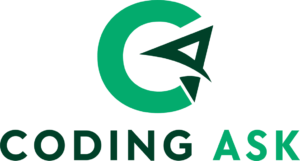HTML Favicon
A HTML Favicon is a little picture that appears in the browser tab next to the page title.
How To Add a Favicon in HTML
Your favicon can be whatever picture you choose. On websites like https://www.favicon.cc, you may even make your own favicon.
Advice: Since a favicon is a little image, it should be straightforward and have a strong contrast.
A favicon image is displayed to the left of the page title in the browser tab, like this:

To add a favicon to your website, either save your favicon image to the root directory of your webserver, or create a folder in the root directory called images, and save your favicon image in this folder. A common name for a favicon image is “favicon.ico”.
Next, add a <link> element to your “index.html” file, after the <title> element, like this:
Example
<!DOCTYPE html>
<html>
<head>
<title>My Page Title</title>
<link rel="icon" type="image/x-icon" href="/images/favicon.ico">
</head>
<body>
<h1>This is a Title</h1>
<p>This is a sentence.</p>
<script>class RocketElementorAnimation{constructor(){this.deviceMode=document.createElement("span"),this.deviceMode.id="elementor-device-mode",this.deviceMode.setAttribute("class","elementor-screen-only"),document.body.appendChild(this.deviceMode)}_detectAnimations(){let t=getComputedStyle(this.deviceMode,":after").content.replace(/"/g,"");this.animationSettingKeys=this._listAnimationSettingsKeys(t),document.querySelectorAll(".elementor-invisible[data-settings]").forEach(t=>{const e=t.getBoundingClientRect();if(e.bottom>=0&&e.top<=window.innerHeight)try{this._animateElement(t)}catch(t){}})}_animateElement(t){const e=JSON.parse(t.dataset.settings),i=e._animation_delay||e.animation_delay||0,n=e[this.animationSettingKeys.find(t=>e[t])];if("none"===n)return void t.classList.remove("elementor-invisible");t.classList.remove(n),this.currentAnimation&&t.classList.remove(this.currentAnimation),this.currentAnimation=n;let s=setTimeout(()=>{t.classList.remove("elementor-invisible"),t.classList.add("animated",n),this._removeAnimationSettings(t,e)},i);window.addEventListener("rocket-startLoading",function(){clearTimeout(s)})}_listAnimationSettingsKeys(t="mobile"){const e=[""];switch(t){case"mobile":e.unshift("_mobile");case"tablet":e.unshift("_tablet");case"desktop":e.unshift("_desktop")}const i=[];return["animation","_animation"].forEach(t=>{e.forEach(e=>{i.push(t+e)})}),i}_removeAnimationSettings(t,e){this._listAnimationSettingsKeys().forEach(t=>delete e[t]),t.dataset.settings=JSON.stringify(e)}static run(){const t=new RocketElementorAnimation;requestAnimationFrame(t._detectAnimations.bind(t))}}document.addEventListener("DOMContentLoaded",RocketElementorAnimation.run);</script></body>
</html>
Reload the “index.html” file in your browser after saving it. Your favicon picture should now appear in your browser tab, to the left of the website title.
Favicon File Format Support
The following table shows the file format support for a favicon image:
| Browser | ICO | PNG | GIF | JPEG | SVG |
|---|---|---|---|---|---|
| Edge | Yes | Yes | Yes | Yes | Yes |
| Chrome | Yes | Yes | Yes | Yes | Yes |
| Firefox | Yes | Yes | Yes | Yes | Yes |
| Opera | Yes | Yes | Yes | Yes | Yes |
| Safari | Yes | Yes | Yes | Yes | Yes |
Favicon File Format Support
Use the <link> element in HTML to add a favicon.
HTML Link Tag
| Tag | Description |
|---|---|
| <link> | Defines the relationship between a document and an external resource |
HTML Favicon
browser
website
image
icon
tab
title
web server
root directory
images folder
file format
ico
png
gif
jpeg
svg
link element
HTML
HTML5
HTML tutorials
Learn HTML
Free HTML tutorials
HTML Example
HTML Explained
HTML Favicon: Enhancing Your Website’s Identity
In the world of web development, the humble favicon plays a crucial role in establishing your website’s identity. A favicon, short for “favorite icon,” is a small image that appears in the browser’s address bar, tab, and bookmarks, providing a visual representation of your website.
The HTML “ element is used to define the favicon for a website. The `rel=”icon”` attribute specifies that the linked resource is an icon, and the `href` attribute points to the location of the favicon file.
To implement a favicon, you need to place the image file in the root directory of your website or in a designated “images” folder. The most commonly used file formats for favicons are `.ico`, `.png`, `.gif`, `.jpeg`, and `.svg`. The recommended size for a favicon is 16×16 or 32×32 pixels, ensuring it displays clearly across various devices and browsers.
By including a well-designed favicon, you can enhance the user experience and make your website more recognizable. Favicons help users quickly identify your website among the many tabs or bookmarks they have open, improving brand recognition and overall website engagement.
Remember, the favicon is a small but mighty element that can contribute to the professionalism and cohesiveness of your website’s design. Investing time in creating an attractive and memorable favicon can pay dividends in the long run.
HTML Favicon: Enhancing Your Website’s Visual Identity
When it comes to website design, the little details can make a big difference. One such detail is the humble favicon – the small icon that appears in your browser’s tab or address bar. In this informative blog post, we’ll dive into the world of HTML favicons and explore how you can use them to enhance your website’s visual identity.
Favicons are small images, typically 16×16 or 32×32 pixels in size, that serve as a visual representation of your website. They help users quickly identify and differentiate your site among the many tabs and windows they have open. Favicons can be in various file formats, including .ico, .png, .gif, .jpg, and .svg.
To add a favicon to your website, you’ll need to use the “ element in the “ section of your HTML document. The `rel=”icon”` attribute specifies that the linked resource is an icon, and the `href` attribute points to the location of the favicon file.
For example:
“`html
It’s important to note that the favicon file should be placed in the root directory of your website or in the `/images/` folder. This ensures that the browser can easily locate and load the favicon.
By using an appropriate and visually appealing favicon, you can reinforce your brand identity and make your website more recognizable to your visitors. Favicons are a small but impactful element that can contribute to the overall professionalism and polish of your online presence.
